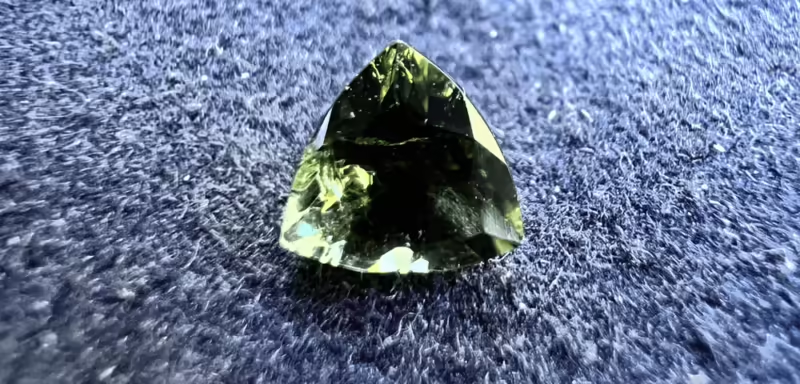Dravite: Properties, Uses and Virtues
Dravite: A Tourmaline in the Colors of Nature
Dravite, a captivating variety of tourmaline, has seduced gem lovers and crystal enthusiasts with its unique beauty and soothing energy.
As we venture into the world of Dravite, we’ll explore its geological formation, the charm of its rough crystals, its diverse global sources and its significant role in history.
Discover the secrets of natural Dravite and its synthetic counterparts, so you can distinguish authenticity on the market.

- Geological Formation of Dravite
- Rough Dravite – Raw Beauty Revealed
- Sources – The Worldwide Reach of Dravite
- Historical Significance of the Dravite – Through the Ages
- Metaphysical Properties of Dravite – Illuminating energies
- Varieties of Dravite
- Dravite colors
- Durability and Wearability of Dravite
- Dravite Improvements – Preserving Natural Beauty
- Synthetic Dravite – Nature in the Laboratory
- Imitations of Dravite – Discerning the Authentic
- Dravite Care – Preserving natural beauty
Geological Formation of Dravite
Dravite, a variety of tourmaline, forms in specific geological conditions, mainly in metamorphic rocks such as schists and gneisses.
The interaction of minerals subjected to high heat and pressure within the Earth’s crust gives rise to Dravite tourmaline.
Rough Dravite – Raw Beauty Revealed
The charm of raw Dravite crystals lies in their structures, which have a distinct prismatic shape with 3, 6 or 9 faces.
The crystals are often striated along their entire length, making them easy to identify.
Sources – The Worldwide Reach of Dravite
Dravite, with its global presence, can be found in various regions around the world. Major sources of Dravite include Kenya, Russia, Zambia and other countries. Each place brings unique variations in color and quality, making Dravite a precious stone cherished by diverse cultures.
Historical Significance of the Dravite – Through the Ages
Dravite was first identified near the river Dravo in Dravograd, Slovenia, hence its name. The discovery is attributed to a Slovenian mineralogist and palaeontologist, Gustav Tschermak, in the 1850s.
Originally, the mineral was mainly appreciated for its unique appearance, with shades ranging from brown to dark brown and sometimes a seductive amber hue.
Over time, gem lovers and collectors began to recognise the beauty and aesthetic appeal of raw Dravite crystals. Its raw, unadulterated charm has been increasingly appreciated, and it has gained in popularity as a gemstone in its own right.
Gemologists began to study its physical and chemical properties, contributing to a better understanding of this unique mineral.
Metaphysical Properties of Dravite – Illuminating energies
Throughout history, precious stones have had cultural and metaphysical significance in different civilisations. Although specific beliefs about Dravite are not as widely known as those about more popular gemstones, it has probably been associated with certain curative or spiritual properties, as have other members of the tourmaline family.
In this respect, Dravite shares tourmaline’s worldwide reputation for protection and rootedness.
Varieties of Dravite
Dravite tourmaline has a small range of colors, but no variety as such.
Dravite colors
Dravite tourmaline captivates with its diverse palette of colors, offering shades of brown, green, yellow and even black. Each shade has its own unique charm, making Dravite an excellent choice for jewellery and crystal enthusiasts.
Durability and Wearability of Dravite
Dravite has excellent hardness and durability, ranging from 7 to 7.5 on the Mohs scale. It is therefore perfectly suited to a variety of jewellery designs, ensuring that its enduring beauty can be cherished for generations.
Dravite Improvements – Preserving Natural Beauty
Dravite’s captivating beauty generally requires no enhancement, but it can be heated to soften brown tones or irradiated to accentuate red hues.
Synthetic Dravite – Nature in the Laboratory
Synthetic tourmaline is notoriously difficult and expensive to create. In this case, synthetic tourmalines are rarely created. Most of the ‘synthetics’ on the market are simulants or artificial materials.
Imitations of Dravite – Discerning the Authentic
Due to the popularity of tourmaline, Dravite can sometimes be imitated or misrepresented on the market by quartz, glass, spodumene, beryl and andalusite. Buyers should exercise caution and approach reputable sources to ensure they are acquiring genuine Dravite gems.
Dravite Care – Preserving natural beauty
To care for your Dravite jewellery, clean it gently with a soft brush and mild soapy water, avoiding harsh chemicals.
Protect them from extreme temperatures and store them separately to avoid scratches.
Avoid exposing them to household products, perfumes or hairspray to avoid chemical damage.
Avoid mechanical cleaning. Regularly check the settings to ensure a secure fit and consider professional cleaning and inspection.
When you’re not wearing them, store them in a box or compartment lined with soft fabric and avoid unnecessary physical impact.

